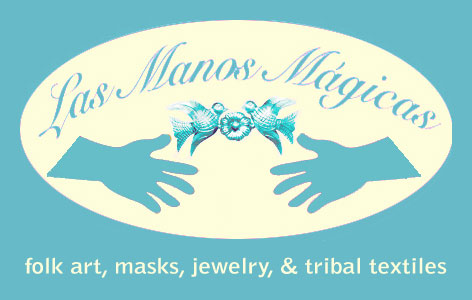About Guatemalan Textiles
Traditional indigenous Guatemalan clothing is handwoven. Here is a video I made to describe the yarn dyeing and weaving process after a visit to a workshop in Nahuala, Guatemala.
In Guatemala, dress is identity. Every village has its specific design of indigenous dress. Someone familiar with the designs can identify a woman’s village by looking at her huipil. (This used to be true of men’s clothing as well, but fewer indigenous Guatemalan men wear native dress anymore. There is pressure to conform to “Western” dress, part of discrimination against natives.)
The parts of dress are as follows:
The woman’s blouse is the huipil. It is made of a long rectangle of handwoven fabric with an opening in the middle for the neck. It is usually stitched together on the sides leaving openings for the arms. Traditionally, all huipiles were handwoven and most still are. There are elaborate designs which vary from village to village, with variations in the village design done by each weaver. But as time becomes more precious in a connecting world, a lot of women are starting to wear huipiles made of a machine-made eyelet embroidery fabric which they heavily embroider around the neckline. The traditional handwoven huipiles are very, very time consuming to make (easily takes weeks to months) on a backstrap loom. Consequently, they are quite expensive. Designs are village specific.
The woman’s skirt is the corte. Cortes or skirts are made from long pieces of fabric woven on a floor loom. They are worn long. The ends are seamed together to create a large tube. The wearer steps into the tube and wraps the fabric around her waist, securing it carefully with a wide woven belt or faja. In some areas, the ends that are stitched together are joined with very pretty hand-embroidered bands called randas. Sometimes the skirts are made from two lengths of narrower fabric (from a narrower loom) which are also joined by colorful randas. There are several different handwoven designs for cortes, or skirts and these vary with where they are woven. There are a few villages which produce many of the cortes worn in Guatemala and women tend to choose cortes according to personal preference, so women in the same village will have the same basic huipil design, but different corte design, Many of the traditional designs were dyed with indigo. Almost all incorporate stripes of jaspe, more commonly known as ikat. Warp ikat is the most common, even though it is technically more difficult to perfect. Some areas have designs with warp ikat running perpendicular to weft ikat. Warp ikat runs in the warp direction, parallel to the length of the fabric. Weft ikat runs across the length of the fabric. Double ikat, rarer and more difficult and prized, has ikat stripes running in both the warp and weft direction. The weft yarn is the one that is woven back and forth across the yarns on the loom. Ikat designs are created in the yarn before the fabric is placed on the loom. The yarn must be stretched out in the desired length that it will be on the loom and then it is resist-dyed. The areas to stay white are wrapped with protective yarns and the yarn is then bunched and dyed, with the protected areas staying white. Then the warp yarn is placed on the loom in the correct configuration to create the design when woven. For weft ikat, the carefully dyed yarn is adjusted at the sides of the loom with each throw of the shuttle to maintain the desired design. The whole process is very time consuming. https://craftatlas.co/crafts/ikat is a good reference about the technique.
The following categories will be added in the next few months:
The belt is the faja.
The rebozo is a shawl.
The tzute is a piece of fabric used to wrap and carry things.

